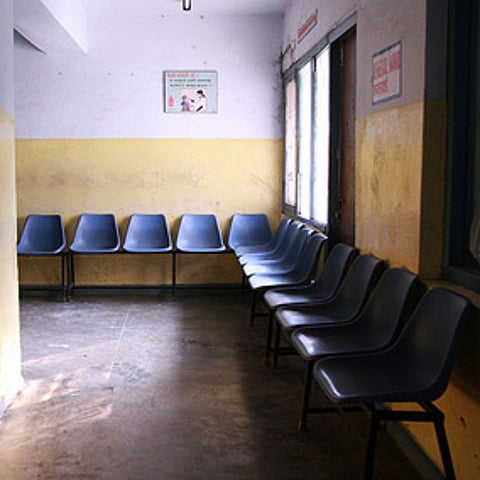Outpatient ward
Asmita Maharjan, and her family of ten, are in a hospital. They have been at Tribhuvan University's Teaching Hospital, Maharajgunj, in north Kathmandu, ever since the earthquake. But except for Asmita's hajurma, her 85-year-old grandmother, no one in the family needs medical treatment. Asmita's sister, who was injured during the earthquake, was discharged several days ago. Yet the entire Maharjan family now lives in the hospital, because both their houses in Dharmasthali, a hillside village on the outskirts of Kathmandu valley, were destroyed on 25 April.
Maharjan family's story is not much different from those thousands who have lost their homes after the earthquake. Like many, their village is yet to receive adequate help. "We could see that lots of aid was being distributed in the plain area below. But because we are on the hillside, we got less," a woman from the family said. Relief workers have found it more difficult to reach the hilly areas and most relief has gone to the more accessible areas. So far, the family has received two packets of Wai Wai noodles, the brand famous for creating Nepal's first billionaire, and a packet of bhujia, a popular snack, so far. When asked why all of them are there, Asmita said "Because we have nowhere else to go now. The tents we got in the village were very small. We could not stay together as a family. The hospital allows us to stay together." As one of the few educated members of the family, Asmita, who has completed tenth grade from a high school in her village, has now become the family's spokesperson.
The Maharjans are huddled together on a sponge mat on the floor of the hospital. A religious charity had been providing food but the amount is limited to the patient and one caregiver, with the rest of the family forced to eat in food stalls outside. Money is in short supply and finishing fast. The government's offer of help, including the NPR 25,000 being offered as immediate relief to people wishing to construct houses, is wholly inadequate they say. "What should we do with this amount? Should we build houses with bamboo sticks?" While bamboo construction might indeed be a quick and cheap alternative, the Maharjan family does not know how such structures could be made sustainable and strong, and fear that Nepal's heavy monsoon, just weeks away, will wash away such efforts. The Maharjans' other option is to wait for the government offer of reconstructing the houses. But this is an offer they have little faith in, coming as it does from a government which has delivered little in the past. "Government took so many years to make the roads, we don't think they will build our houses," they say.
Despite the increasing pressure of patients on the hospital, the Maharjan family is so far being tolerated with kindness by the hospital staff, and have not been asked to leave the premises yet. However, unless arrangements are made to provide adequate shelters to such families, the numbers of people taking refuge in the streets may increase in the days to come.
~Tenzn Tsomo is an editorial intern at Himal Southasian.
~'Notes from the field' is a reporting initiative, where we bring stories of the people and places that have been affected by the April 2015 earthquake in Nepal.

